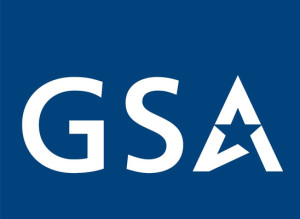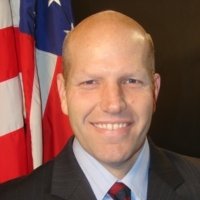
Are contractors worrying too much over GSA’s data rule?
The General Services Administration and schedule contractors continue debating the implementation of the Transactional Data Rule.
Many government contractors are worried, fearful and in disbelief about the General Services Administration’s implementation of its Transactional Data Rule.
There are calls for delays in implementation and more training for contracting officers and contracting specialists. There are worries that contracting officers will continue to ask for the dreaded, outdated, lawsuit inducing data that the TDR is supposed to replace — commercial sales practices (CSPs) and the price reduction clause disclosures.
And maybe most of all, industry is concerned about the cost to collect and transmit the data back to GSA.
Despite all of these fears, we know very little about the impact, cost or problems with GSA collecting transactional data, which it says is information generated when the government purchases goods or services from a vendor. The rule requires vendors to report specific details such as descriptions, part numbers, quantities and prices paid for the items purchased.
GSA finalized the TDR rule in June creating a requirement for government contractors to submit information about transactions through the schedule contracts and those governmentwide acquisition contracts run by the agency.
Let’s start off with what we do know about the GSA’s Transactional Data Rule. More than 1,000 companies have signed the modification under their Schedules contract and are starting to provide the data under the pilot. That is about 40 percent of the total number of contractors who are eligible under the pilot and 8 percent have held off, while the other 52 percent still are considering whether to take part in the year-long pilot or not.
“At this rate of uptake, we are in a position now where we are beginning to see the data come in. We believe we are going to have the kind of coverage that we would want to have in a successful pilot, and we, in fact, will have really terrific coverage of a large percentage of items and labor categories that are covered in the pilot,” said Kevin Youel Page, the deputy commissioner of the Federal Acquisition Service, during a meeting with industry on Feb. 7 in Washington. “In fact, those industry partners who choose to stay in the pilot and to partake in the pilot will find some advantage, I think, in the improved ease of use, the improved value of the data that come out of the pilot, and to the extent to which some companies find it in their best interest not to participate, I think they will see greater market share opportunities going forward.”
So the question that arises is whether industry’s concerns are real or more about the fear of the unknown?
Roger Waldron, the president of the Coalition for Government Procurement, explained industry’s concerns well in a recent column. One of his main points is whether GSA is really listening to what the association’s membership is saying about TDR and the way the government buys.
Waldron has been an outspoken critic of TDR, but not because he doesn’t believe the data is valuable and would not be helpful to some extent. But, like many in industry, it seems his frustrations are more around GSA’s misunderstanding of the challenges and issues at hand, particularly about collecting the data.
Larry Allen, the president of Allen Federal Business Partners and a long-time GSA expert, said at the panel discussion that it was still too early to really understand the total impact of TDR, but there are some things that are becoming clear to vendors.
“This is moving quickly, in fact moving so quickly that anecdotal evidence that I’ve collected from industry and I think others in industry have experienced is that industry may think they know a lot about TDR and some of the people who have worked on the project inside GSA for the last couple of years absolutely know a lot about TDR, it’s a question mark about whether individual contracting officers and contracting specialists know about TDR,” he said. “What I’ve seen so far suggests that training has been uneven. We have a couple of cases where contracting officers have insisted on CSP data, which for a contractor CSP and TDR data is arguably the worst of both worlds. Similarly, we have contractors who want to take advantage of the TDR option but they talk to their contracting officers and contracting specialists and those people have heard of TDR, but don’t know what it is.”
Allen added he also is concerned about the fact that 1,000 companies already signed up.
“Right away it tells me, in my experience, an awful lot of companies sign something that they probably really don’t know what it means, and the contracting officers who had them sign it, in a lot of cases, don’t understand what it means. So we have signed pieces of paper, but not without the fullness of understanding of what comes next,” he said.
Latest Acquisition News
GSA has heard these concerns over the last year or so as it started talking about the idea and developing the rule.
Youel Page told me in September the goal of TDR isn’t about driving down prices, but making the government a more intelligent buyer. He also said GSA understands the complexity of the pilot.
Judith Zawatsky, director of GSA’s Multiple Aware Schedules (MAS) program management office, said at the Feb. 7 event that FAS has gone out the six centers impacted by the pilot at least twice, if not three times over the last year to conduct training sessions on TDR.
GSA says it has trained 400 acquisition workers or about 90 percent of the contracting officers, contracting specialists, and others who need to know about TDR.
The agency says it plans to return to the acquisition centers at least one more time this year. It also is holding internal office hours for the contracting employees to share best practices and answer any TDR questions that may arise.
Zawatsky added GSA also held training sessions online for more than 800 vendor participants and also answer questions from industry on a daily basis.
Elliott Branch, the Navy Department’s deputy assistant secretary for acquisition and procurement, said he is cautiously optimistic about the impact of TDR. He said the government can’t be seen as one buyer, like GSA continues to push for, but creating marketplaces and understanding how vendors’ offerings change over time will be helpful.
“We need to set up a communications channel so we can go fix the ambiguities, stop doing the things we ought not to do and keep doing the good things,” he said. “We could slow down and overthink this for the next five years and not make any progress, or we could go into it blindly and say, ‘Nope, we will stay on the path,’ and it could be chaos. Let me suggest there is a third way. That third way is to create an intentional feedback loop to see how we are doing in each of the three communities.”
Youel Page said GSA already is doing that through the pilot. But obviously, Waldron, Allen and many others in the industry community don’t think it’s enough or haven’t been included in the loop.
“It is impossible to assess the value of TDR without understanding its direct and indirect cost for industry and government, and any attempt to do so is simply an exercise in futility,” Waldron wrote.
GSA should receive kudos for holding this latest industry session. The next step maybe to bring in Waldron and a few companies to show how the data team is using the information collected from the pilot as well as assess some of the initial pilot participants about the burden of collecting and transmitting the data. These basic steps quickly could alleviate the concerns or prove to GSA the TDR concept as developed today isn’t working.
Return to the Reporter’s Notebook
Copyright © 2024 Federal News Network. All rights reserved. This website is not intended for users located within the European Economic Area.
Jason Miller is executive editor of Federal News Network and directs news coverage on the people, policy and programs of the federal government.
Follow @jmillerWFED





